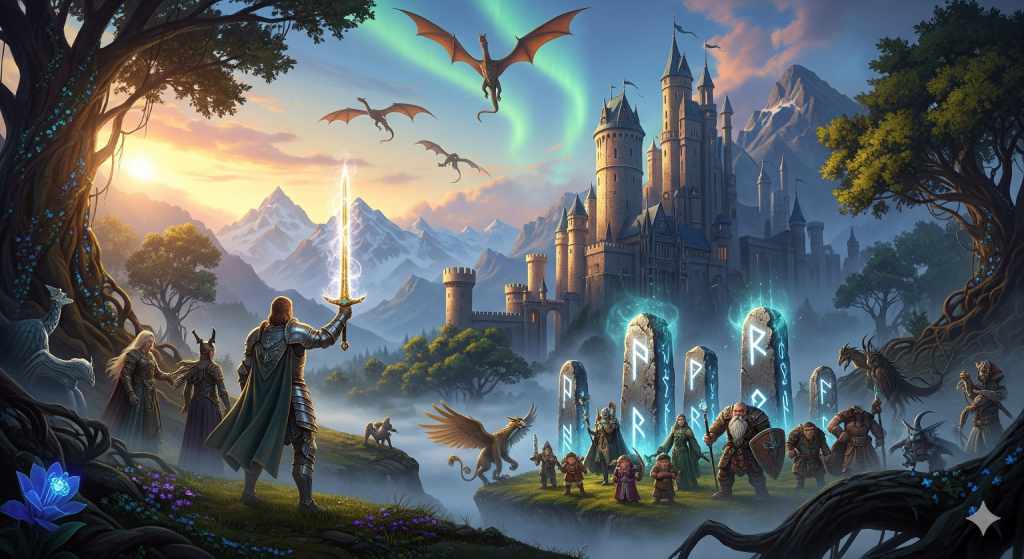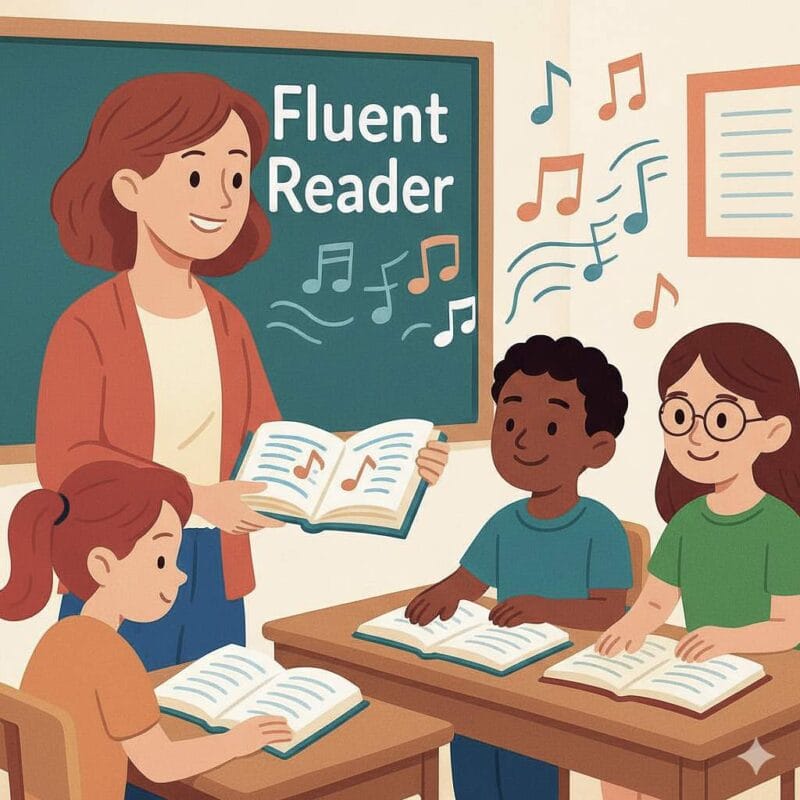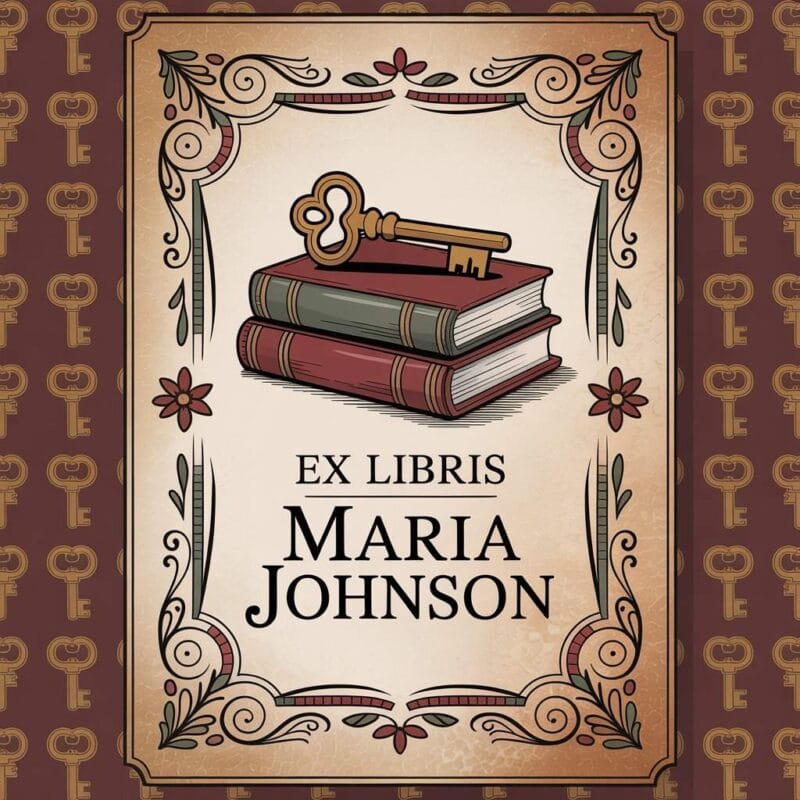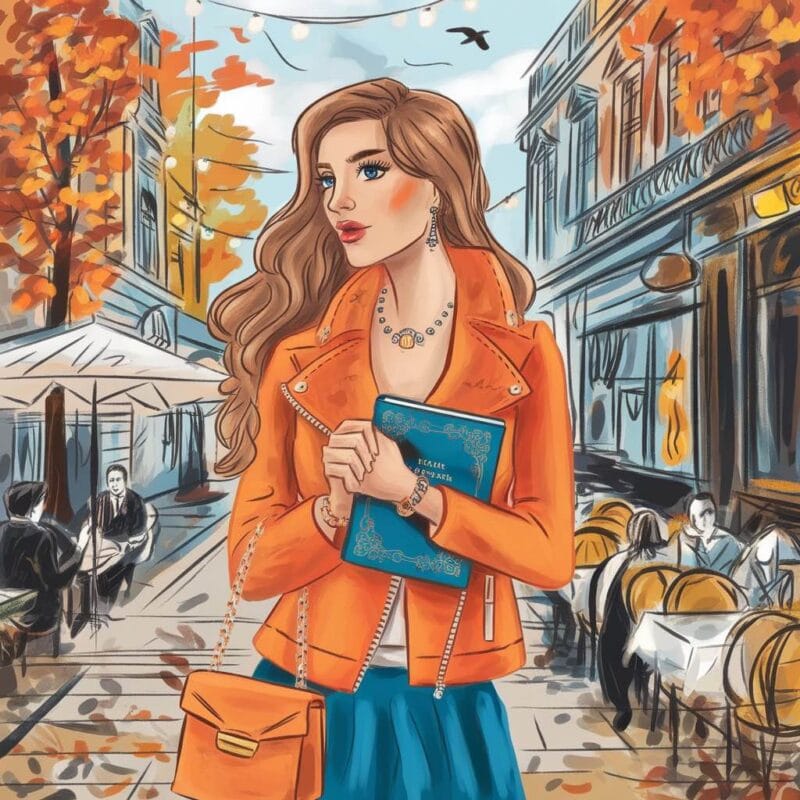Epic fantasy fiction, often used interchangeably with high fantasy, demands more than magic and heroes. It unfolds on a grand scale, frequently in secondary worlds, fully imagined realms distinct from Earth, with world-threatening stakes, enormous casts, and layered plots. J.R.R. Tolkien’s The Lord of the Rings trilogy exemplifies this: a quest traversing vast lands, involving elves, dwarves, ring-bearing heroes, a clear struggle of good versus evil, maps, languages, and deep lore.
Key Traits
- Grand scale and complex structure: Epic fantasy fiction features complex, multi-stranded stories populated by many characters whose actions ripple across kingdoms and ages. The stakes often link to fate, whether lineage, prophecy, or cosmic balance, and they elevate the narrative beyond personal drama.
- Secondary world and mythic roots: The setting in epic fantasy emerges as more than a backdrop. Authors construct secondary realms with their own histories, systems, and creatures. Tolkien’s use of invented languages, heraldry, and layered history created a believable mythical world. High-fantasy stories typically unfold in such worlds, where quests and magical creatures function as central elements.
- Hero’s quest and rising stakes: Central to epic fantasy is a hero’s journey—a transformation from innocence or obscurity to leadership or salvation; good vs. evil often frames that transformation. Many stories begin with a young, ordinary person drawn into conflict that imperils an entire world.
Relationship with High Fantasy, Urban Fantasy, and Fantastic Fiction
Epic Fantasy vs. High Fantasy
While high fantasy refers to setting (secondary worlds, mythic themes), epic fantasy emphasizes scope and stakes. A medieval-styled fantasy about court life may be high fantasy, but it lacks the scale to be epic. Conversely, a sweeping adventure in a real-world setting might qualify as epic, though not high fantasy.
Urban Fantasy and Fantastic Fiction
Urban fantasy and elements of fantastic fiction often overlap but remain distinct. Urban fantasy grounds magic in familiar reality, e.g., the city, magic intruding on everyday life, rather than building new worlds. Epic fantasy, instead, immerses readers wholly in invented worlds with large-scale conflicts and mythic dimensions.
Signature Characteristics of Epic Fantasy Novels
Below are thematic and structural hallmarks that define truly epic fantasies:
- Multilayered political and cultural conflict: Epic fantasy novels often depict convoluted politics, heritage, rebellion, and kingdoms at war. Authors build civilizations, languages, and histories that underpin every conflict, which create a sense of magnitude and consequence.
- Moral polarity on a cosmic scale: Good vs. evil frames many epic fantasies. Villains are often formidable embodiments of darkness; heroes must rise not only physically but also morally to oppose them.
- Mythic resonance: Drawing on epic poetry traditions, these stories echo legends, myths, and even ancient epics such as Beowulf and The Odyssey. That resonance gives epic fantasy its heightened style.
Icons of Epic Fantasy
Here are some defining epic fantasy books and authors that enriched the genre:
- The Lord of the Rings (1954-1955) by J.R.R. Tolkien: Tolkien’s masterpiece remains the pillar of epic fantasy. Its sprawling cast, immersive lore, deep history, and struggle over the One Ring set the standard for the genre.
- The Wheel of Time (1990-2013) by Robert Jordan (continued by Brandon Sanderson): Jordan’s saga extends an epic scope over fourteen volumes with detailed worldbuilding, a massive cast, prophecy-laced conflict, and mythic undertones. Sanderson completed it after Jordan’s passing, cementing its epic stature.
- Mistborn (2006-2022) & The Stormlight Archive (2010-present) by Brandon Sanderson: Sanderson contributes modern innovations to epic fantasy through complex magic systems, multi-layered politics, and evolving characters. His works often contrast hard vs. soft magic systems, grounded yet inventive.
- The Broken Earth (2015-2017) by N.K. Jemisin (modern epic fantasy): Combines world-level catastrophe, layered narrative, and cultural myth in a sweeping, award-winning trilogy; an example of how the genre evolves.
Building Blocks for Epic Fantasy Appreciation
For avid fans curious about epic fantasy fiction and epic high fantasy books, here are ways to explore enrichment:
- Look beyond magic to scope: judge a novel by its stakes, world, and cast, not only by its magical systems.
- Trace the hero’s arc: observe how they evolve from obscurity to a world-changing force.
- Embrace worldbuilding detail: maps, invented languages, histories—these craft immersion.
- Study how modern authors like Sanderson adapt quest structure and moral conflict to fresh settings.
Epic fantasy fiction captivates through scale, imaginative invention, moral frames, and immersive worlds. Its paramount books, from Tolkien to Sanderson, continue to inspire and redefine what an epic can be. If you are exploring epic fantasy books, begin with those foundational strands and let them open paths to adventure far beyond.
Further Reading
What is epic fantasy? by nkjemisin.com
What Makes ‘Epic Fantasy’ Epic? by Chloe Smith, Fantasy-Faction
What qualifies as “epic” fantasy? on Reddit
Epic Fantasy Books on Goodreads




